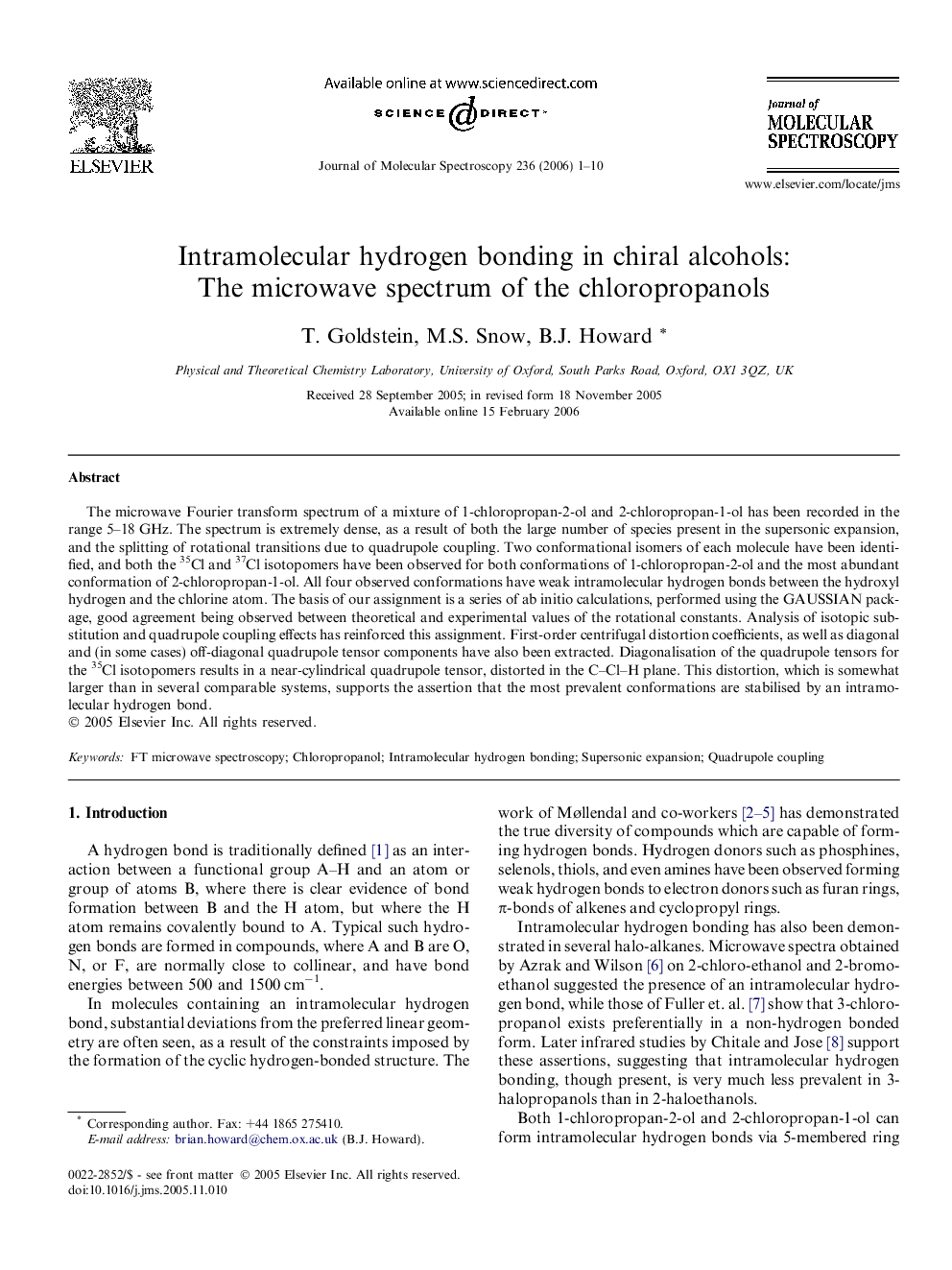| Article ID | Journal | Published Year | Pages | File Type |
|---|---|---|---|---|
| 5416203 | Journal of Molecular Spectroscopy | 2006 | 10 Pages |
The microwave Fourier transform spectrum of a mixture of 1-chloropropan-2-ol and 2-chloropropan-1-ol has been recorded in the range 5-18Â GHz. The spectrum is extremely dense, as a result of both the large number of species present in the supersonic expansion, and the splitting of rotational transitions due to quadrupole coupling. Two conformational isomers of each molecule have been identified, and both the 35Cl and 37Cl isotopomers have been observed for both conformations of 1-chloropropan-2-ol and the most abundant conformation of 2-chloropropan-1-ol. All four observed conformations have weak intramolecular hydrogen bonds between the hydroxyl hydrogen and the chlorine atom. The basis of our assignment is a series of ab initio calculations, performed using the GAUSSIAN package, good agreement being observed between theoretical and experimental values of the rotational constants. Analysis of isotopic substitution and quadrupole coupling effects has reinforced this assignment. First-order centrifugal distortion coefficients, as well as diagonal and (in some cases) off-diagonal quadrupole tensor components have also been extracted. Diagonalisation of the quadrupole tensors for the 35Cl isotopomers results in a near-cylindrical quadrupole tensor, distorted in the C-Cl-H plane. This distortion, which is somewhat larger than in several comparable systems, supports the assertion that the most prevalent conformations are stabilised by an intramolecular hydrogen bond.
